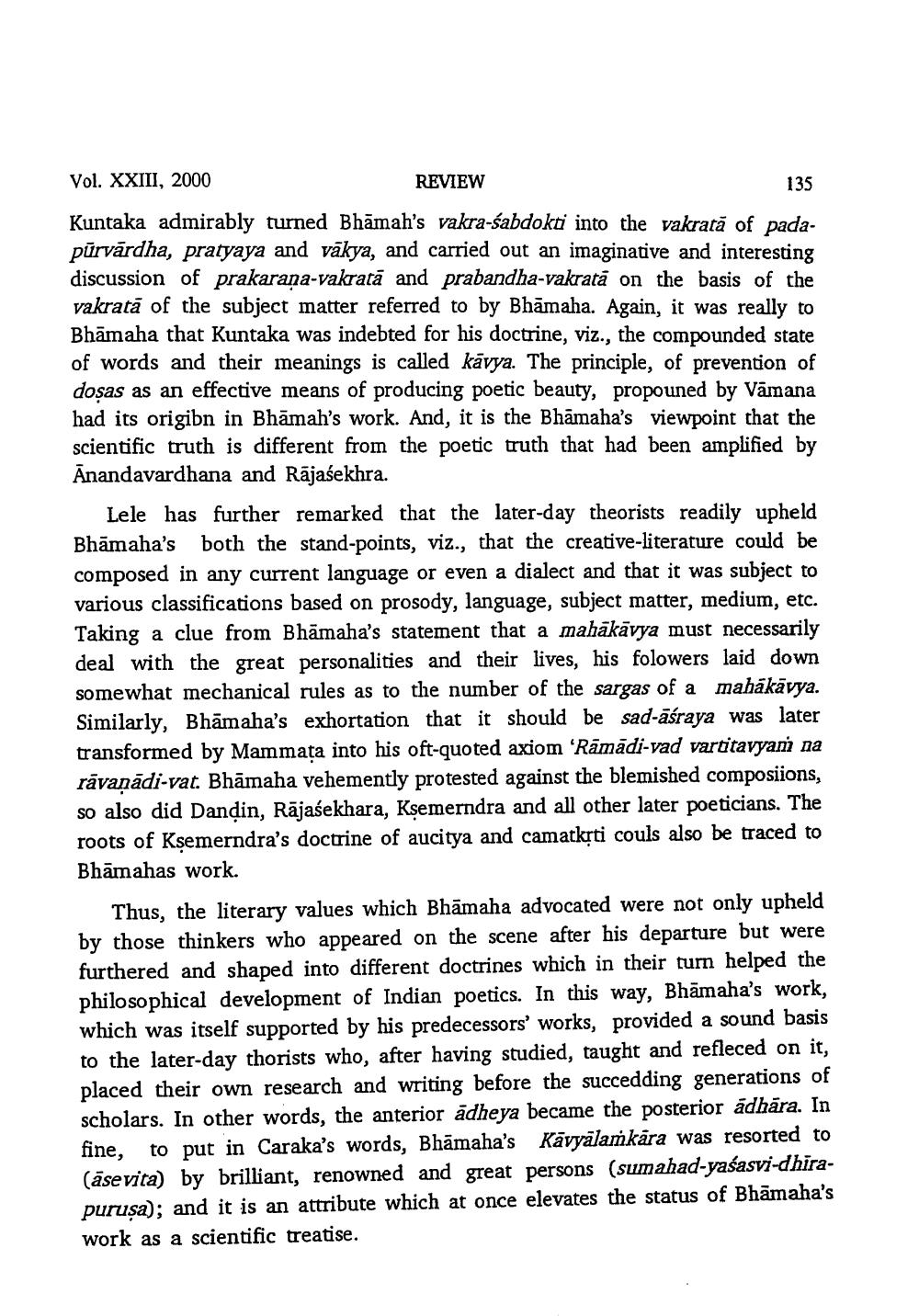________________
Vol. XXIII, 2000
REVIEW
135
Kuntaka admirably turned Bhāmah's vakra-śabdokti into the vakrată of padapūrvārdha, pratyaya and vākya, and carried out an imaginative and interesting discussion of prakarana-vakratā and prabandha-vakrata on the basis of the vakrată of the subject matter referred to by Bhāmaha. Again, it was really to Bhämaha that Kuntaka was indebted for his doctrine, viz., the compounded state of words and their meanings is called kavya. The principle, of prevention of dosas as an effective means of producing poetic beauty, propouned by Vāmana had its origibn in Bhāmah's work. And, it is the Bhämaha's viewpoint that the scientific truth is different from the poetic truth that had been amplified by Anandavardhana and Rājasekhra.
Lele has further remarked that the later-day theorists readily upheld Bhāmaha's both the stand-points, viz., that the creative-literature could be composed in any current language or even a dialect and that it was subject to various classifications based on prosody, language, subject matter, medium, etc. Taking a clue from Bhāmaha's statement that a mahākāvya must necessarily deal with the great personalities and their lives, his folowers laid down somewhat mechanical rules as to the number of the sargas of a mahakāvya. Similarly, Bhāmaha's exhortation that it should be sad-āśraya was later transformed by Mammata into his oft-quoted axiom 'Rāmādi-vad vartitavyan na rāvanādi-vat. Bhāmaha vehemently protested against the blemished composiions, so also did Dandin, Rājasekhara, Ksemerndra and all other later poeticians. The roots of Ksemerndra's doctrine of aucitya and camatkrti couls also be traced to Bhāmahas work.
Thus, the literary values which Bhāmaha advocated were not only upheld by those thinkers who appeared on the scene after his departure but were furthered and shaped into different doctrines which in their turn helped the philosophical development of Indian poetics. In this way, Bhāmaha's work, which was itself supported by his predecessors' works, provided a sound basis to the later-day thorists who, after having studied, taught and refleced on it, placed their own research and writing before the succedding generations of scholars. In other words, the anterior adheya became the posterior adhara. In fine, to put in Caraka's words, Bhāmaha's Kavyālamkāra was resorted to (äsevita) by brilliant, renowned and great persons (sumahad-yaśasvi-dhirapurusa); and it is an attribute which at once elevates the status of Bhāmaha's work as a scientific treatise.




